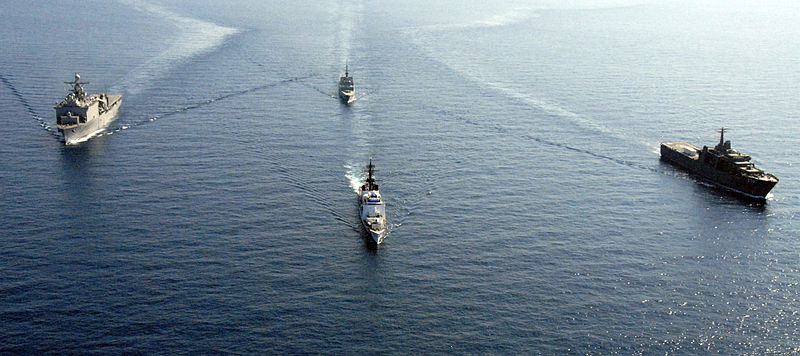The United States Navy has dispatched an aircraft carrier strike group to the South China Sea amid calls by regional command for a revived “coalition” to contain Chinese ambitions in the contested waters.
The small armada, consisting of the nuclear-power aircraft carrier USS John C. Stennis and several cruisers and destroyers accompanying it, arrived in the South China Sea on Tuesday, the Navy Times reported. US Pacific Fleet spokesman Clay Doss said that the group is carrying out a routine patrol and will appear in the South China Sea regularly.

On Wednesday, US Pacific Commander Admiral Harry Harris called for the revival of a maritime ‘coalition’ comprising nearby democracies Australia, India, and Japan—as well as the US—to patrol the increasingly tense region, which has recently seen the deployment of Chinese jet fighters, missiles and advanced radar systems.
Harris also announced the location of joint naval exercises between the US, India and Japan, which this year will take place in the northern waters of the Philippine Sea, adjacent to the South China Sea.
See also: US, Australia vow to toughen up on South China Sea islands
Dates for the exercise, and their precise location, have not been disclosed.
Chinese state media have responded to Washington’s overtures and New Delhi’s growing involvement in the disputed area with a set of stern warnings.

A Global Times editorial accused the US of “inciting South China Sea claimants to stir up trouble in the region” and “destroying the peaceful and stable environment there.” India cannot afford to lose Chinese support, the article claimed, which is needed to achieve economic growth and the success of BRICs.
In stark contrast, Adm. Harris said that Indian leadership was needed for security in the Indo-Asia-Pacific region. “We need you,” he said, addressing New Delhi.

Professor Odd Arne Westad of Harvard University’s Kennedy School of Government told HKFP that India’s increasing involvement in the contested region is most likely a “tit-for-tat” response to “a perceived concerted strategy to spread [Chinese] influence into the Indian Ocean” through the Chinese-run port of Gwadar in Pakistan and the country’s first overseas military base in Djibouti.
However, Westad also cautioned against the view that “everything is about great power relations.”
“Legal principles play an important role in India’s identification as a state,” he said, suggesting that many there view China’s southward excursions as “not just a great power overstepping but [as] fundamentally wrong.”
A United Nations-backed tribunal in The Hague is expected to rule by May on an international arbitration case initiated by the Philippines in 2013 against China’s overarching claims in the ongoing territorial dispute.
